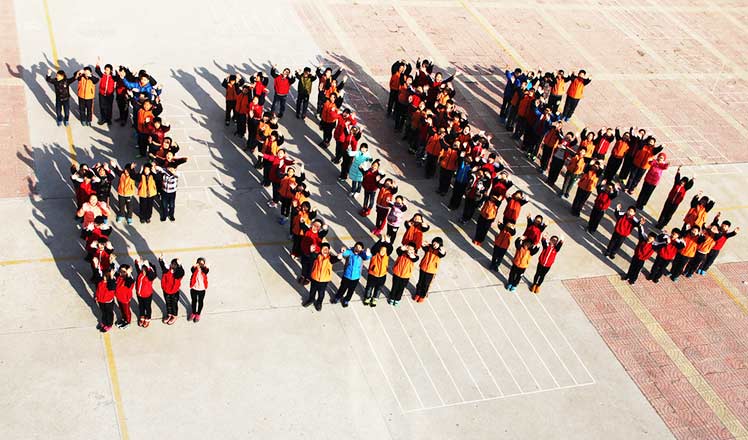Juvederm now available in China
Updated: 2016-01-02 02:34
By XU JUNQIAN in Shanghai(China Daily USA)
|
||||||||
Buoyed by China’s booming medical aesthetics sector, which is estimated to be growing by 20 percent every year, global pharmaceutical company Allergan in December introduced Juvederm, one of its signature derma filler brands, to test the waters of the Chinese market.
Juvederm products are known as the first and only ones in the industry that have been approved by the US Food and Drug Administration to be marketed based on proven lip augmentation results that last up to one year.
The Juvederm collection of fillers, which will be used by a number of hospitals and medical institutions in partnership with the company, consists mainly of a modified form of hyaluronic acid, a naturally produced sugar in the human body that can help the skin restore moisture and plumpness. It enjoys a leading position in terms of sales in the United States.
“After seven years of waiting and preparation, we are more than thrilled to unveil our stellar products to the beauty-conscious women in China,” said Zhao Ping, president of Allergan China, who added that the long wait was partly due to the amount of time required to get approvals from the Chinese Food and Drug Administration (CFDA).
From the perspective of Zhang Bing, director of Chinese Association of Plastics and Aesthetics, the timing couldn’t have been better. Zhang said that medical surgeries such as lip augmentation are highly regulated and must be performed by licensed physicians at licensed medical institutions with products that have been approved by CFDA. However, up to 80 percent of derma fillers are illegally injected in hotel rooms by people recommended from online social platforms.
“A primary reason for the rampant illegal use of fillers is the inaccessibility and inconvenience of getting legal procedures. The demand is solid,” said Zhang.
In October, the CFDA, along with four ministries and government bodies of the central government, issued a public notice and vowed to fight the illegal use of derma fillers. In an interview with Chinese media earlier in 2015, Ma Xiaowei, vice deputy of China’s Ministry of Health, estimated that people in China had spent 15 billion yuan ($2.3 billion) on medical aesthetics in 2010, with 3 million surgeries or procedures involving derma filler injections.
With demand coming from an urban population of 170 million females aged from 15 to 64 years old, Ma foresees that beauty products and cosmetic surgeries will become the fourth largest growth engine behind household consumption in China, following real estate, automobiles and travel.
Zhao noted that 70 percent of Chinese women — the highest among Asian countries — polled by Allergan adopt an open mindset about beauty procedures and are actively pursuing them in order to look younger or more beautiful.
Mauricio de Maio, a famous medical aesthetics professional who works closely with Juvederm, noted that the women in China who have been enlisting his services have been unusually young, with most of them aged no older than 30. In contrast, most of his clients in western countries are aged between 50 and 60.
“I am very surprised that these young Chinese clients are telling me that they want to become even younger,” he said.
- Top planner targets 40% cut in PM2.5 for Beijing-Tianjin-Hebei cluster
- Yearender: Predictions for 2016 through 20 questions
- Asia's largest underground railway station opens in Shenzhen
- Shanghai bans drug-using actors, drivers
- Clamping down to clean up the air
- Yearender: Ten most talked-about newsmakers in 2015
- Over 1 million refugees have fled to Europe by sea in 2015: UN
- Turbulence injures multiple Air Canada passengers, diverts flight
- NASA releases stunning images of our planet from space station
- US-led air strikes kill IS leaders linked to Paris attacks
- DPRK senior party official Kim Yang Gon killed in car accident
- Former Israeli PM Olmert's jail term cut, cleared of main charge

 Yearender: China's proposals on world's biggest issues
Yearender: China's proposals on world's biggest issues
 NASA reveals entire alphabet but F in satellite images
NASA reveals entire alphabet but F in satellite images
 Yearender: Five major sporting rivalries during 2015
Yearender: Five major sporting rivalries during 2015
 China counts down to the New Year
China counts down to the New Year
 Asia's largest underground railway station opens in Shenzhen
Asia's largest underground railway station opens in Shenzhen
 Yearender: Predictions for 2016 through 20 questions
Yearender: Predictions for 2016 through 20 questions
 World's first high-speed train line circling an island opens in Hainan
World's first high-speed train line circling an island opens in Hainan
 'Internet Plus' changes people's lifestyles in China
'Internet Plus' changes people's lifestyles in China
Most Viewed
Editor's Picks

|

|

|

|

|

|
Today's Top News
Shooting rampage at US social services agency leaves 14 dead
Chinese bargain hunters are changing the retail game
Chinese president arrives in Turkey for G20 summit
Islamic State claims responsibility for Paris attacks
Obama, Netanyahu at White House seek to mend US-Israel ties
China, not Canada, is top US trade partner
Tu first Chinese to win Nobel Prize in Medicine
Huntsman says Sino-US relationship needs common goals
US Weekly

|

|







